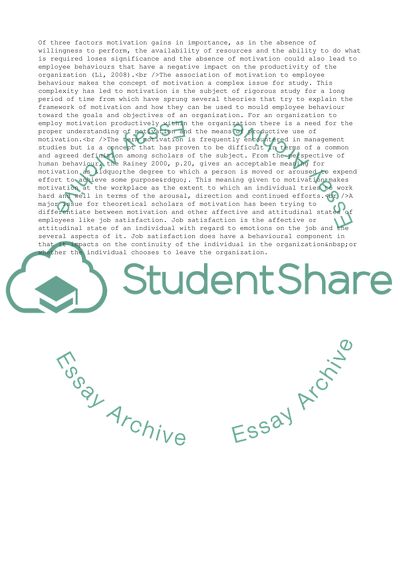Cite this document
(Theories of motivation and how they are used within organisations Essay, n.d.)
Theories of motivation and how they are used within organisations Essay. https://studentshare.org/management/1716083-theories-of-motivation-and-how-they-are-used-within-organisations
Theories of motivation and how they are used within organisations Essay. https://studentshare.org/management/1716083-theories-of-motivation-and-how-they-are-used-within-organisations
(Theories of Motivation and How They Are Used Within Organisations Essay)
Theories of Motivation and How They Are Used Within Organisations Essay. https://studentshare.org/management/1716083-theories-of-motivation-and-how-they-are-used-within-organisations.
Theories of Motivation and How They Are Used Within Organisations Essay. https://studentshare.org/management/1716083-theories-of-motivation-and-how-they-are-used-within-organisations.
“Theories of Motivation and How They Are Used Within Organisations Essay”. https://studentshare.org/management/1716083-theories-of-motivation-and-how-they-are-used-within-organisations.


